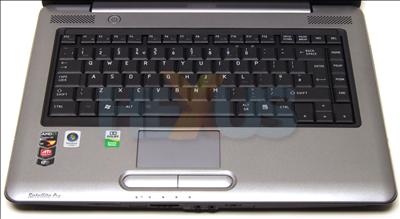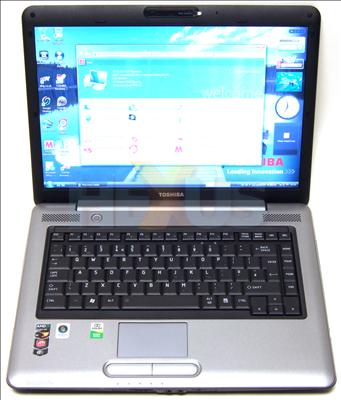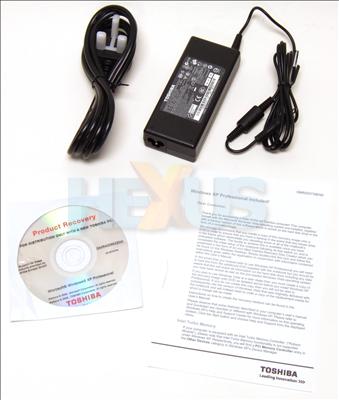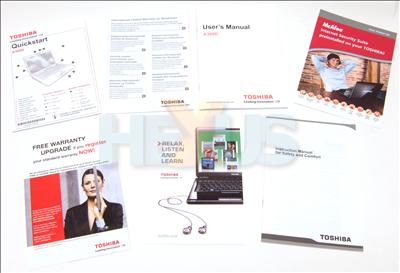The screen, warranty, and bundle
Audio quality isn't up to the same room-filling standard as the Satellite's; music sounds tinny in comparison. The full-size keyboard is better to type upon because it doesn't suffer from the glossy, slippy finish as the home-oriented model's.
The screen isn't as razor-sharp as many we've seen, lacking a touch of focus and detail. A 1,440x900px panel would have been preferable, knowing that Excel Spreadsheets and PowerPoint presentations are likely to be viewed.
The setup procedure, from when first switched on, is an onerous, time-consuming affair. Windows Vista is loaded from an image and the whole process, until Vista becomes usable, is some 40 minutes. It's prudent to have the AC mains adapter plugged in at this time.
Toshiba also bundles in shortcuts to Amazon and eBay with the basic build; we're not fans of such 'helpful' bloatware.
The 250GB hard drive is split into two partitions, with the second containing a factory-fresh installation should matters go awry. It can be accessed by pressing F8 during POST and then reloaded on to the primary C: However, doing so means going through the irksome Vista-loading process again, and it takes close to an hour to complete.
As we alluded to earlier, Windows XP Professional is bundled at no extra cost, intimating that it's a downgrade from the shipping Vista Business.
Pre-loaded with a 60-day trial of Microsoft Office, Google Earth, a 30-day McAfee Internet Security Suite subscription and Tosh's TEMPRO software, the bundle is about average for the industry.
Warranty
As standard, the Satellite Pro range ships with a one-year
warranty that requires the purchaser to return it to a
Toshiba-authorised dealer at their own cost should something go
seriously wrong.
The warranty can be upgraded, free, to a collect-and return service,
where Toshiba foots the courier bill in both directions, by registering
the laptop at an URL that's provided in the documentation.
It's a simple method of gaining extra user info, we suppose, and the
benefit is enough to ensure that almost everyone takes advantage of it.






